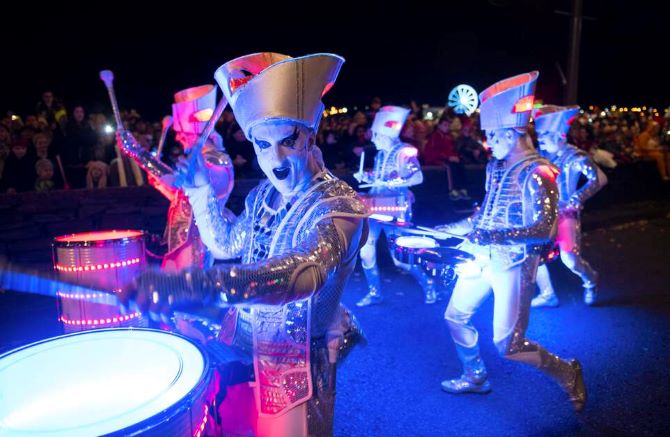Your title should promise drama, intrigue, challenge, magic, mystery, romance, heroism or other storytelling elements appropriate to your experience. Finding these elements may involve looking at what you have from a different angle. The next tip can help with that.
Contents
- A Vital Partnership: How Arts, Culture and Heritage can work with tourism
- How to develop a sustainable Arts, Cultural or Heritage tourism business
- How Arts, Culture, and Heritage can Embrace a Giant Spirit
- How Arts, Culture and Heritage can boost our Giant Stories
- How to use storytelling skills to bring heritage to life
- How to present Arts, Culture, and Heritage to diverse visitors
- How to communicate with international visitors
- How learning from others can help develop a great experience
- Arts, Culture and Heritage in Tourism Toolkit
Contents
- A Vital Partnership: How Arts, Culture and Heritage can work with tourism
- How to develop a sustainable Arts, Cultural or Heritage tourism business
- How Arts, Culture, and Heritage can Embrace a Giant Spirit
- How Arts, Culture and Heritage can boost our Giant Stories
- How to use storytelling skills to bring heritage to life
- How to present Arts, Culture, and Heritage to diverse visitors
- How to communicate with international visitors
- How learning from others can help develop a great experience
- Arts, Culture and Heritage in Tourism Toolkit
How to use storytelling skills to bring heritage to life
For non-local visitors, who are a transient and time-limited audience, stories are an important way to connect with the heritage of a place or its people. The arts offer an exciting array of media for conveying meaning and contemporary resonance and breathing fresh life into old stories and straight facts. The ingredients of great stories and storytelling should be at the heart of your offer for visitors.

The skills of storytellers
Travellers have always enjoyed exchanging stories. Well-told tales are a great way to connect with a place quickly. Stories often focus on the past and its legacy in the present. This is not dry history, the facts of what happened, it is the meaning we take from that and its continuing impact on the present.
Derry Halloween Festival

Derry Halloween, Europe’s largest Halloween Festival, celebrates the Celtic stories and folklore underpinning the traditional Irish Halloween with passion, imagination and creativity. The festival began 37 years ago as a small community event and has grown and evolved to an event that has over 1,000 participants and attracts 110,000 visitors to Derry. It involves the whole community; local people in families, community groups and businesses alongside commissioned professional performers and visual artists.
Storytelling is at the heart of the celebrations. The stories are diverse and may focus on traditional figures like The Morrigan or local characters such as Half-Hanged McNaghten and Walter de Burgh. The stories are told in small circles and on a much larger scale in venues across the city, inside and out. Through costumed characters, performance, the Parade, the Awakening the Walled City Trail, and modern media such as large-scale projections on key buildings the tales are retold, reimagined and refreshed.
The marketing recognises that storytelling is vital to Derry Halloween and increasingly uses storytelling language to communicate the appeal of the festival.
The extraordinary success of Derry Halloween depends on the continuing commitment of local people who take enormous pride in the event. It reflects the special character of Derry people and the warm welcome the city extends to visitors from around the world. Local stories, local people, their humour and hospitality make Derry Halloween unique and unforgettable.
Eight techniques from the storytellers’ toolkit for tourism experiences
1. Have a great title
2. Focus on your characters rather than chronology
Storytellers know that most people forget dates and names, but they remember people and relationships. Characters drive the action and make the story relatable and memorable. So, find the people at the heart of your story. Try to bring in the people who may be marginalised or erased; they will broaden the appeal of your narrative.
3. Develop a great beginning
Storytellers work hard to hone the start of the tale to ensure they grab the listeners’ attention. The first five minutes of any experience are similarly vital, and more complex. As well as dealing with all the logistics of arrival and orientation, the introduction to the experience must raise expectations, and build interest. This should be seamlessly planned.
4. Know your story
You and your team need to know your content really well and, in particular, understand which parts of it will make the greatest impact on your audience. Structure your experience carefully around these. Work out what information is essential, and what is subsidiary. You can then create the ‘abridged version’ if needed for time-limited visitors, such as tour groups.
5. Vary the pace and tone
Ensure your experience is varied. Mix activity with reflection, conversation with silence. Play with the emotional content, balancing tragedy and humour, suspense and celebration. Employ a range of media.
6. Engage your audience
From time to time (at least) give people openings to participate in the storytelling. For some experiences the whole thing will be participatory. Whatever context or medium you are working in, avoid an experience based solely on looking or listening.
7. Have a good ending
Storytellers work as hard on their ending as on the beginning. Make sure your visitors leave on a high with something to remember and take away with them.
8. Watch your audience
However well you have planned, people will react differently. So, just as storytellers will adapt their delivery and choice of stories, you should be prepared to offer alternatives for different groups.